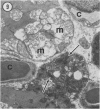Abstract
In this study, the authors examined the effect of the anti-tumor agent Adriamycin, a known cardiotoxin, on mouse heart, diaphragm, and gastrocnemius muscle. Using an established model of Adriamycin cardiac toxicity, they found that 4 days after the intraperitoneal injection of 20 mg/kg of Adriamycin, characteristic heart lesions, including vacuolation of the sarcoplasmic reticulum, interstitial edema, and mitochondrial degeneration, were demonstrated in all treated animals. Furthermore, similar, but much more severe, myocyte damage was demonstrated in the diaphragm; muscle toxicity followed a decreasing gradient of injury from the peritoneal to the thoracic surface of the tissue. On the other hand, treatment with Adriamycin resulted in an increase in the size and number of lipid droplets in the red fibers of the gastrocnemius muscle without any other ultrastructural evidence of drug-induced damage to myocytes. An examination of the pharmacokinetics and metabolism of Adriamycin after intraperitoneal treatment revealed that relative drug levels in muscle (diaphragm much greater than heart much greater than gastrocnemius) paralleled the degree of ultrastructural damage observed. This study indicates that treatment with Adriamycin can produce significant injury to non-cardiac muscle in a fashion that strongly resembles the characteristic pattern of Adriamycin-related damage to the heart, and that the degree of myocyte damage is apparently dependent upon the Adriamycin concentration in the tissue.
Full text
PDF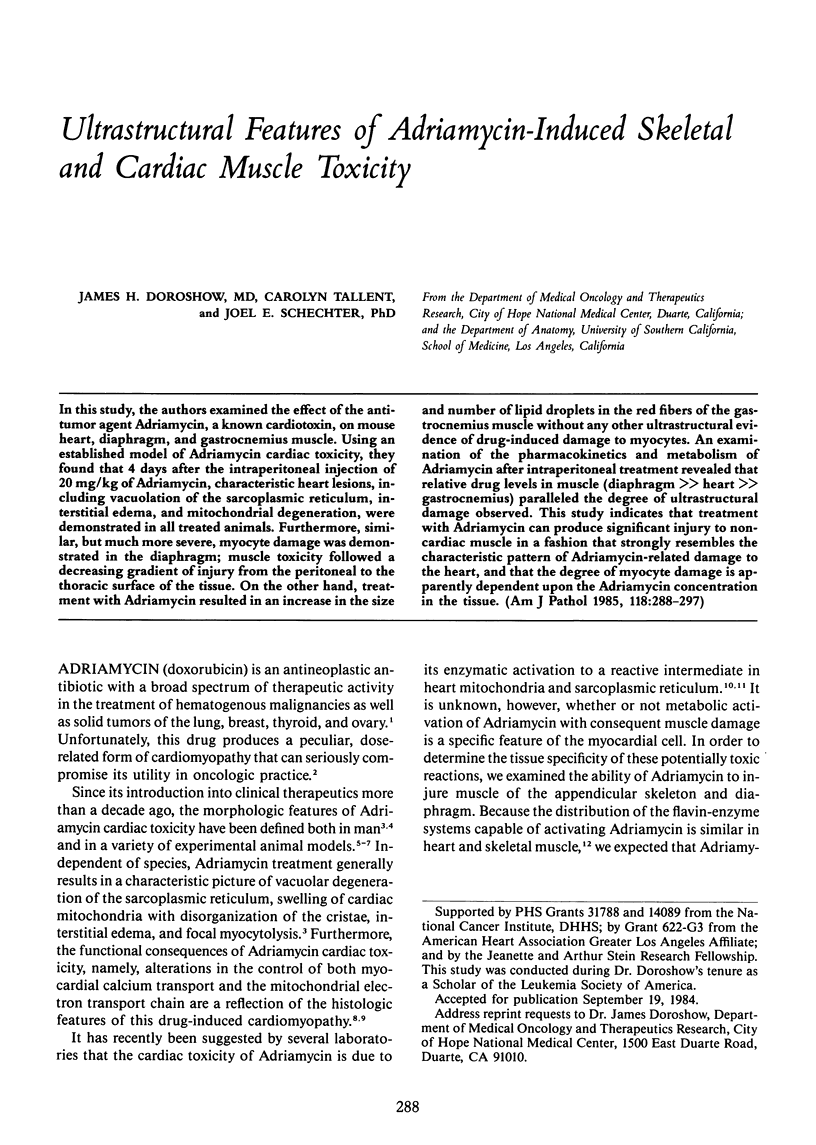
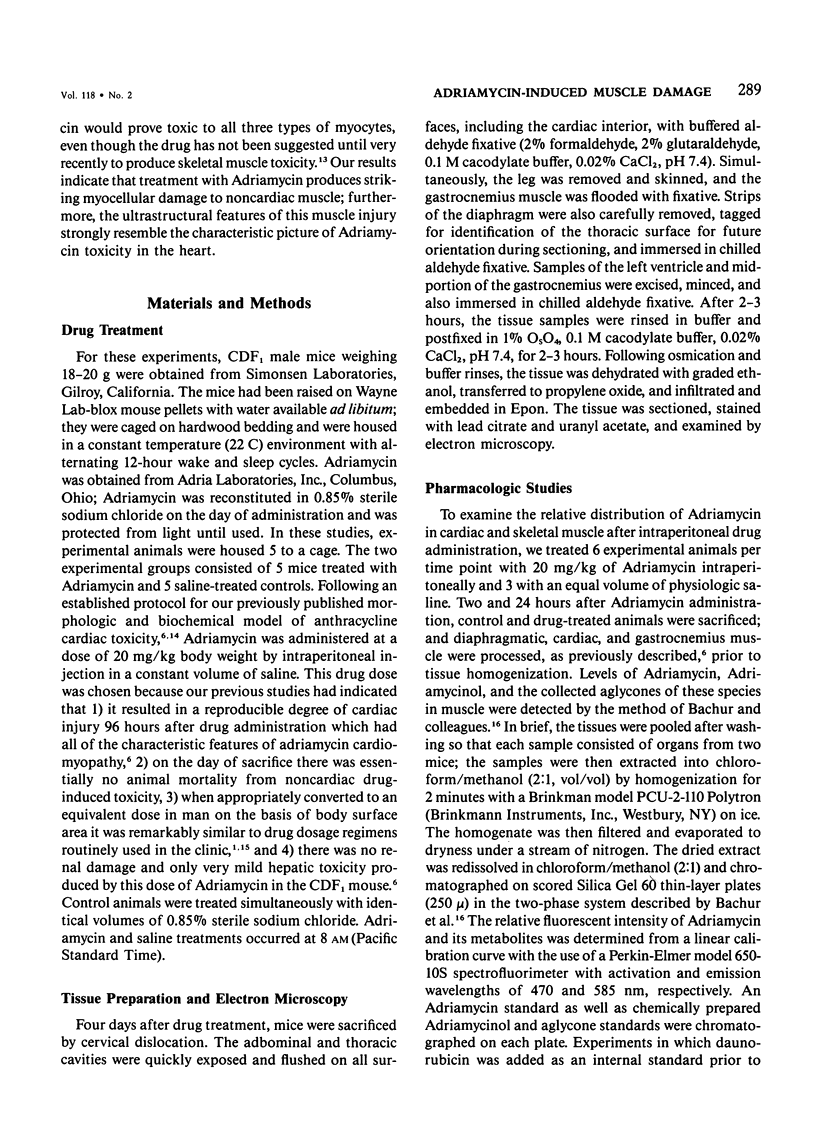
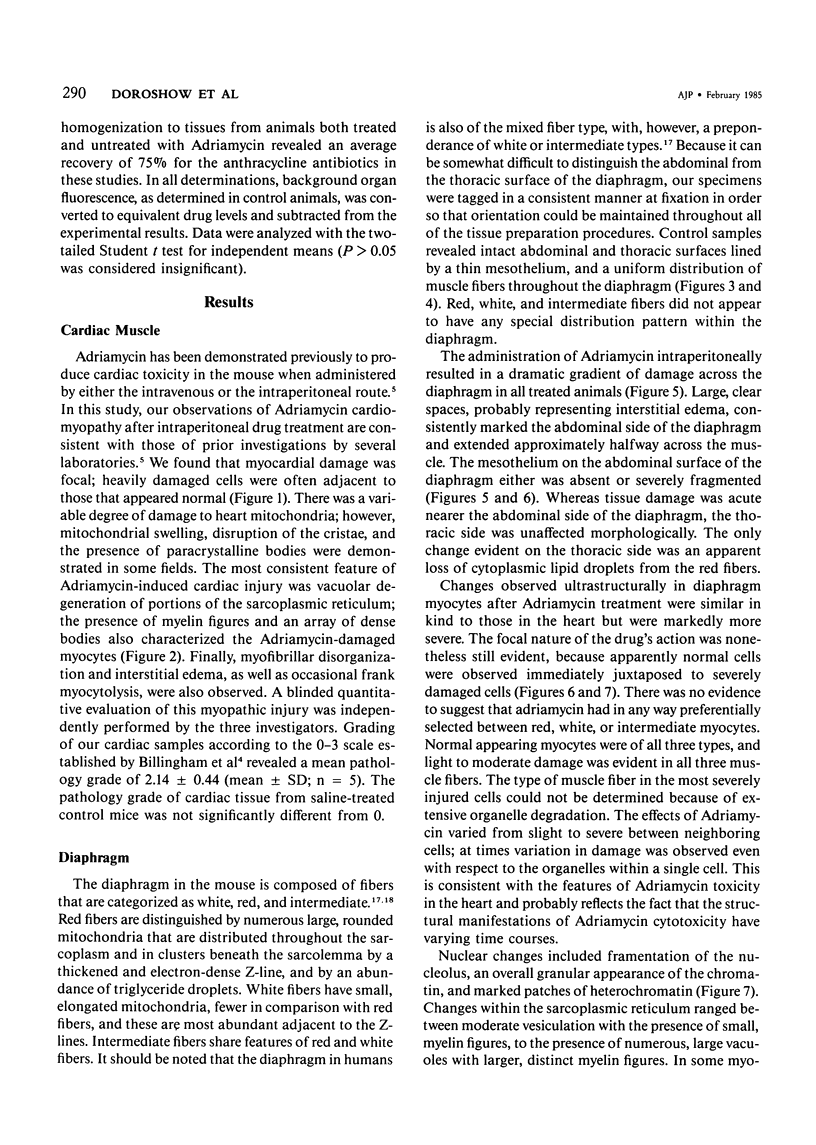
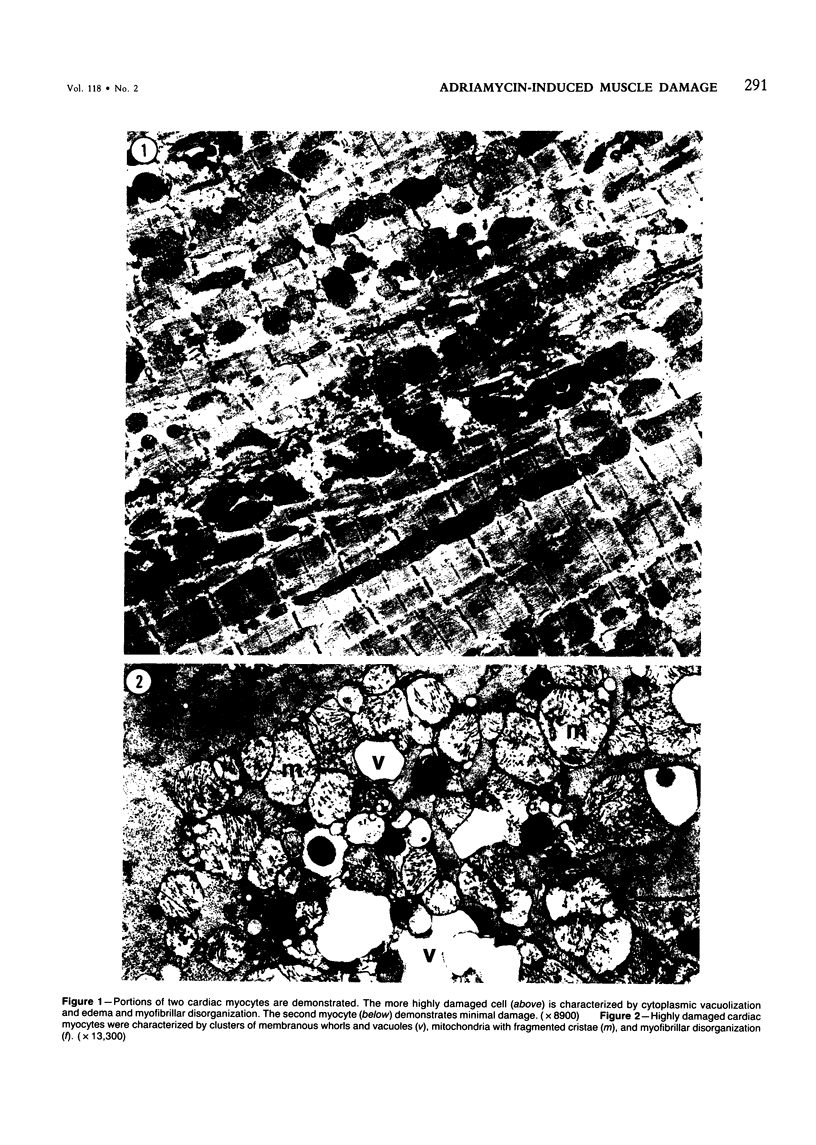
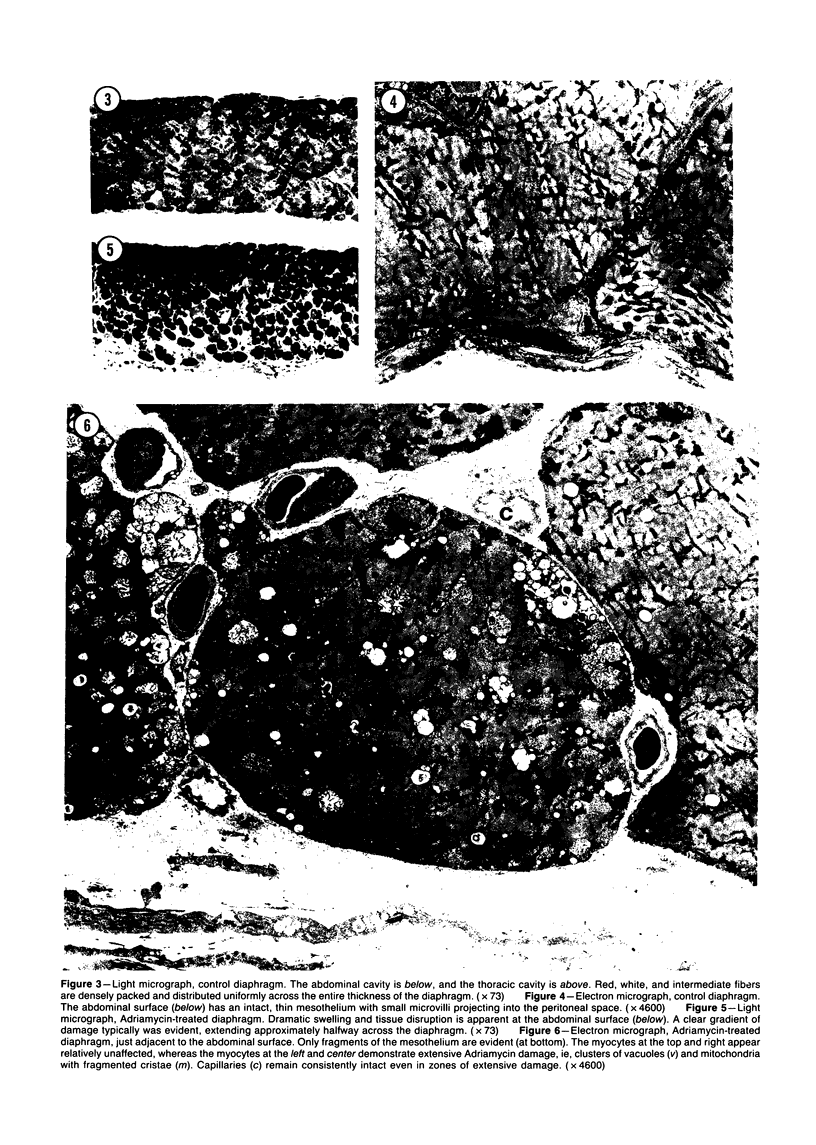
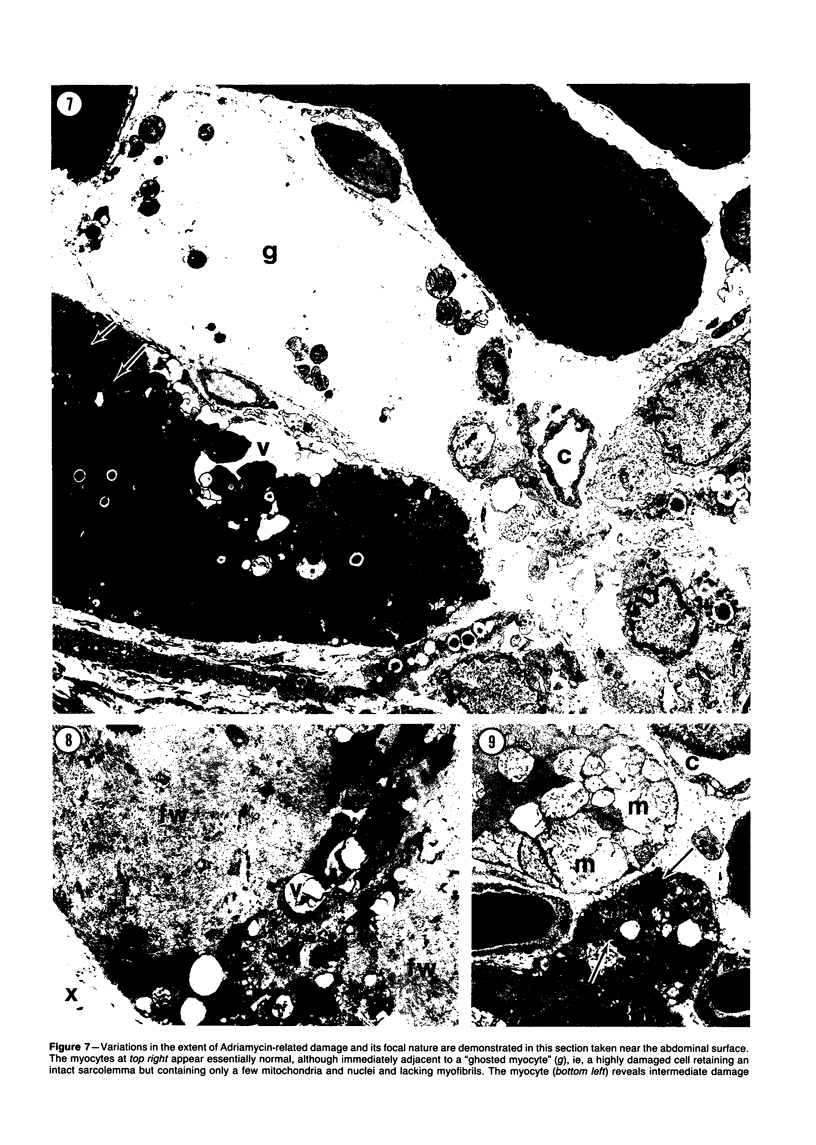
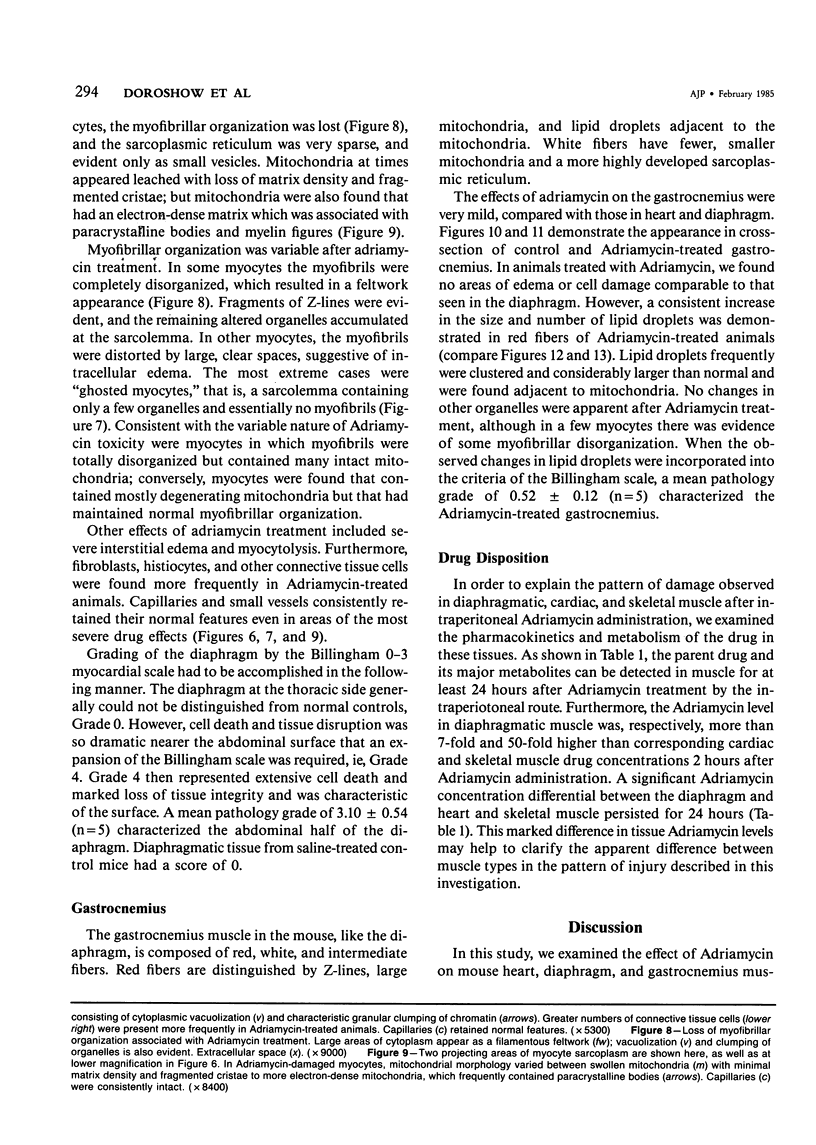
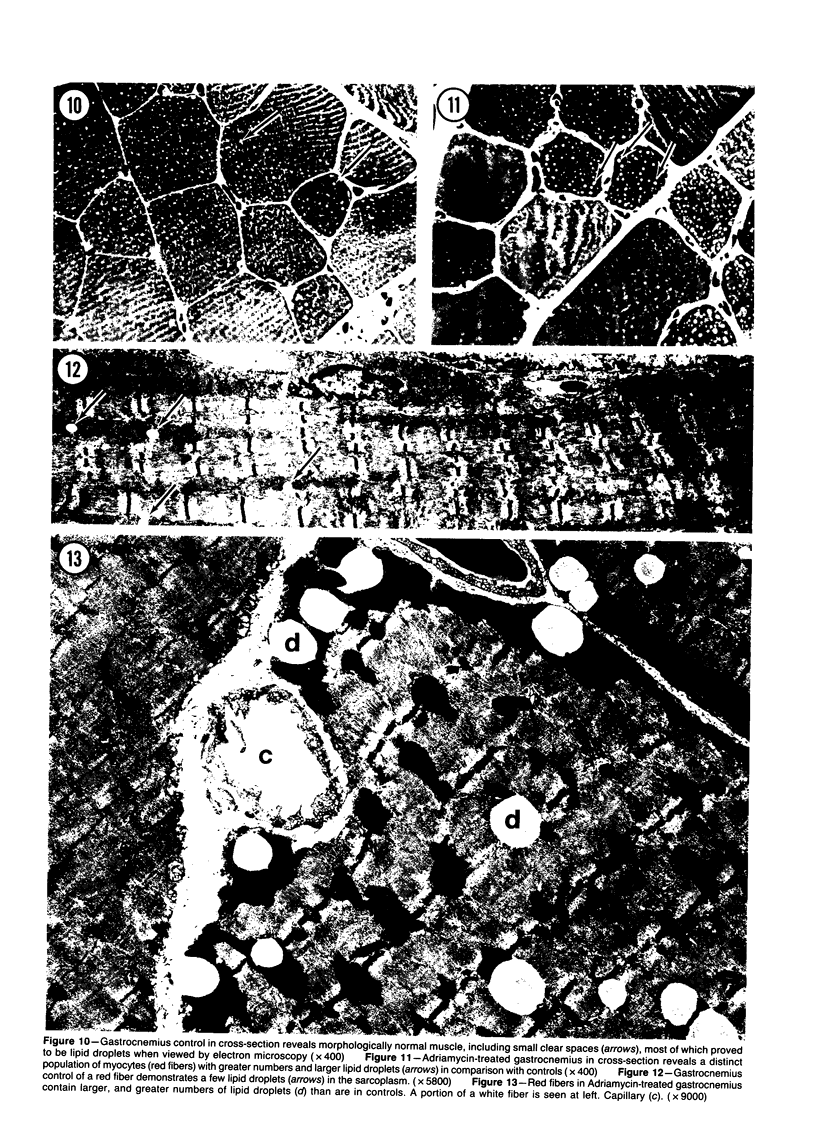
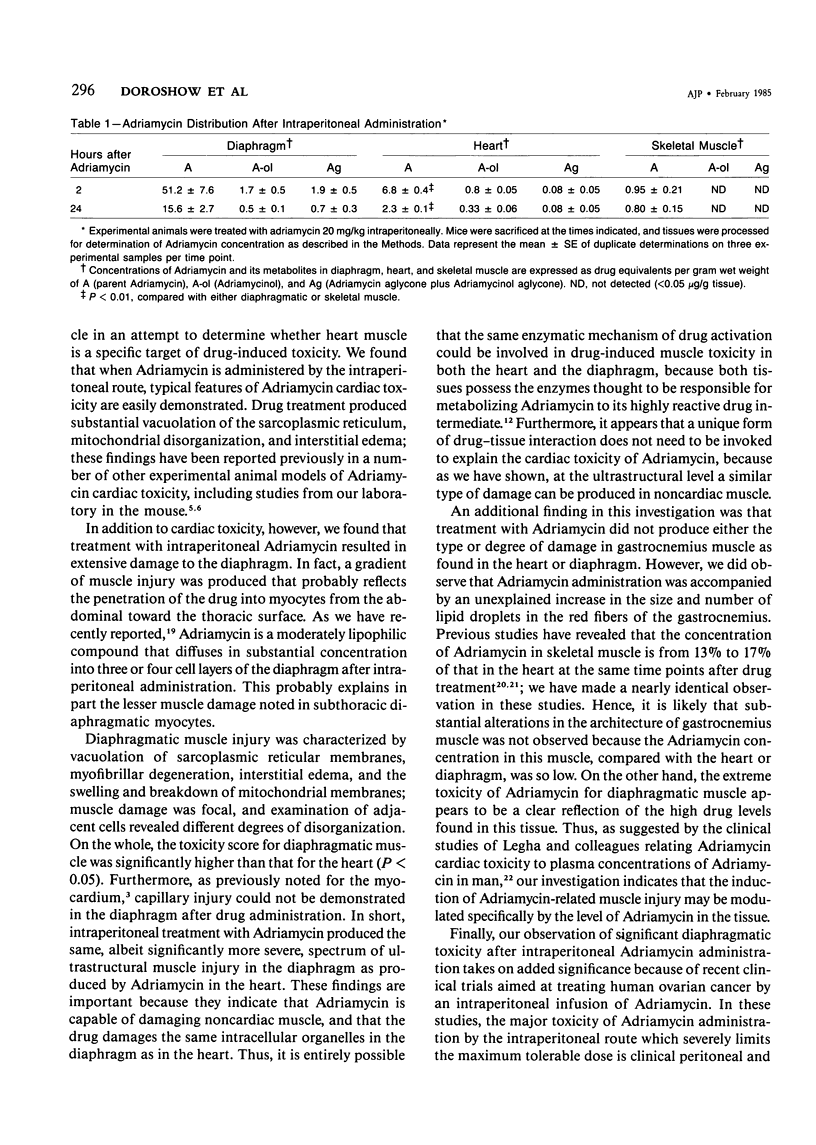
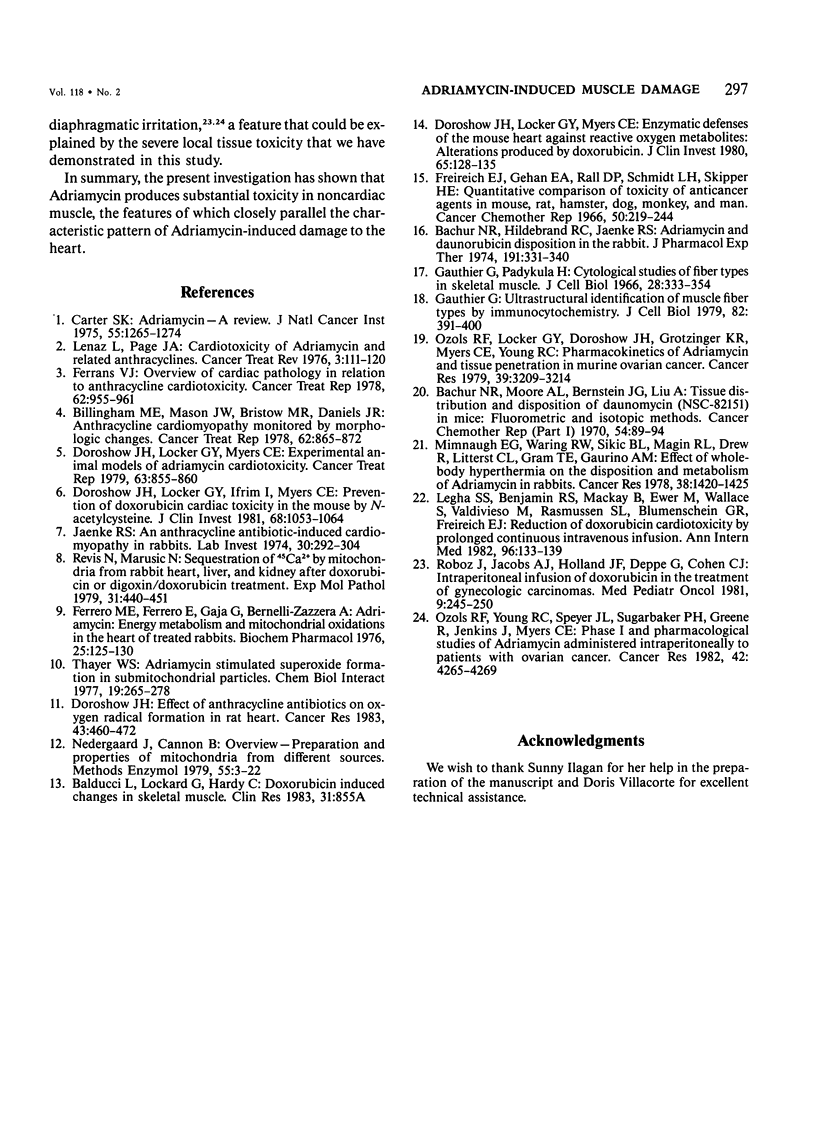
Images in this article
Selected References
These references are in PubMed. This may not be the complete list of references from this article.
- Bachur N. R., Hildebrand R. C., Jaenke R. S. Adriamycin and daunorubicin disposition in the rabbit. J Pharmacol Exp Ther. 1974 Nov;191(2):331–340. [PubMed] [Google Scholar]
- Bachur N. R., Moore A. L., Bernstein J. G., Liu A. Tissue distribution and disposition of daunomycin (NCS-82151) in mice: fluorometric and isotopic methods. Cancer Chemother Rep. 1970 Apr;54(2):89–94. [PubMed] [Google Scholar]
- Billingham M. E., Mason J. W., Bristow M. R., Daniels J. R. Anthracycline cardiomyopathy monitored by morphologic changes. Cancer Treat Rep. 1978 Jun;62(6):865–872. [PubMed] [Google Scholar]
- Carter S. K. Adriamycin-a review. J Natl Cancer Inst. 1975 Dec;55(6):1265–1274. doi: 10.1093/jnci/55.6.1265. [DOI] [PubMed] [Google Scholar]
- Doroshow J. H. Effect of anthracycline antibiotics on oxygen radical formation in rat heart. Cancer Res. 1983 Feb;43(2):460–472. [PubMed] [Google Scholar]
- Doroshow J. H., Locker G. Y., Ifrim I., Myers C. E. Prevention of doxorubicin cardiac toxicity in the mouse by N-acetylcysteine. J Clin Invest. 1981 Oct;68(4):1053–1064. doi: 10.1172/JCI110328. [DOI] [PMC free article] [PubMed] [Google Scholar]
- Doroshow J. H., Locker G. Y., Myers C. E. Enzymatic defenses of the mouse heart against reactive oxygen metabolites: alterations produced by doxorubicin. J Clin Invest. 1980 Jan;65(1):128–135. doi: 10.1172/JCI109642. [DOI] [PMC free article] [PubMed] [Google Scholar]
- Doroshow J. H., Locker G. Y., Myers C. E. Experimental animal models of adriamycin cardiotoxicity. Cancer Treat Rep. 1979 May;63(5):855–860. [PubMed] [Google Scholar]
- Ferrans V. J. Overview of cardiac pathology in relation to anthracycline cardiotoxicity. Cancer Treat Rep. 1978 Jun;62(6):955–961. [PubMed] [Google Scholar]
- Ferrero M. E., Ferrero E., Gaja G., Bernelli-Zazzera A. Adriamycin: energy metabolism and mitochondrial oxidations in the heart of treated rabbits. Biochem Pharmacol. 1976 Jan 15;25(2):125–130. doi: 10.1016/0006-2952(76)90278-1. [DOI] [PubMed] [Google Scholar]
- Freireich E. J., Gehan E. A., Rall D. P., Schmidt L. H., Skipper H. E. Quantitative comparison of toxicity of anticancer agents in mouse, rat, hamster, dog, monkey, and man. Cancer Chemother Rep. 1966 May;50(4):219–244. [PubMed] [Google Scholar]
- Gauthier G. F., Padykula H. A. Cytological studies of fiber types in skeletal muscle. A comparative study of the mammalian diaphragm. J Cell Biol. 1966 Feb;28(2):333–354. doi: 10.1083/jcb.28.2.333. [DOI] [PMC free article] [PubMed] [Google Scholar]
- Gauthier G. F. Ultrastructural identification of muscle fiber types by immunocytochemistry. J Cell Biol. 1979 Aug;82(2):391–400. doi: 10.1083/jcb.82.2.391. [DOI] [PMC free article] [PubMed] [Google Scholar]
- Jaenke R. S. An anthracycline antibiotic-induced cardiomyopathy in rabbits. Lab Invest. 1974 Mar;30(3):292–304. [PubMed] [Google Scholar]
- Legha S. S., Benjamin R. S., Mackay B., Ewer M., Wallace S., Valdivieso M., Rasmussen S. L., Blumenschein G. R., Freireich E. J. Reduction of doxorubicin cardiotoxicity by prolonged continuous intravenous infusion. Ann Intern Med. 1982 Feb;96(2):133–139. doi: 10.7326/0003-4819-96-2-133. [DOI] [PubMed] [Google Scholar]
- Lenaz L., Page J. A. Cardiotoxicity of adriamycin and related anthracyclines. Cancer Treat Rev. 1976 Sep;3(3):111–120. doi: 10.1016/s0305-7372(76)80018-7. [DOI] [PubMed] [Google Scholar]
- Mimnaugh E. G., Waring R. W., Sikic B. I., Magin R. L., Drew R., Litterst C. L., Gram T. E., Guarino A. M. Effect of whole-body hyperthermia on the disposition and metabolism of adriamycin in rabbits. Cancer Res. 1978 May;38(5):1420–1425. [PubMed] [Google Scholar]
- Nedergaard J., Cannon B. Overview--preparation and properties of mitochondria from different sources. Methods Enzymol. 1979;55:3–28. doi: 10.1016/0076-6879(79)55003-4. [DOI] [PubMed] [Google Scholar]
- Ozols R. F., Locker G. Y., Doroshow J. H., Grotzinger K. R., Myers C. E., Young R. C. Pharmacokinetics of adriamycin and tissue penetration in murine ovarian cancer. Cancer Res. 1979 Aug;39(8):3209–3214. [PubMed] [Google Scholar]
- Ozols R. F., Young R. C., Speyer J. L., Sugarbaker P. H., Greene R., Jenkins J., Myers C. E. Phase I and pharmacological studies of adriamycin administered intraperitoneally to patients with ovarian cancer. Cancer Res. 1982 Oct;42(10):4265–4269. [PubMed] [Google Scholar]
- Revis N., Marusic N. Sequestration of 45Ca2+ by mitochondria from rabbit heart, liver, and kidney after doxorubicin or digoxin/doxorubicin treatment. Exp Mol Pathol. 1979 Dec;31(3):440–451. doi: 10.1016/0014-4800(79)90043-1. [DOI] [PubMed] [Google Scholar]
- Roboz J., Jacobs A. J., Holland J. F., Deppe G., Cohen C. J. Intraperitoneal infusion of doxorubicin in the treatment of gynecologic carcinomas. Med Pediatr Oncol. 1981;9(3):245–250. doi: 10.1002/mpo.2950090307. [DOI] [PubMed] [Google Scholar]
- Thayer W. S. Adriamycin stimulated superoxide formation in submitochondrial particles. Chem Biol Interact. 1977 Dec;19(3):265–278. doi: 10.1016/0009-2797(77)90050-3. [DOI] [PubMed] [Google Scholar]









